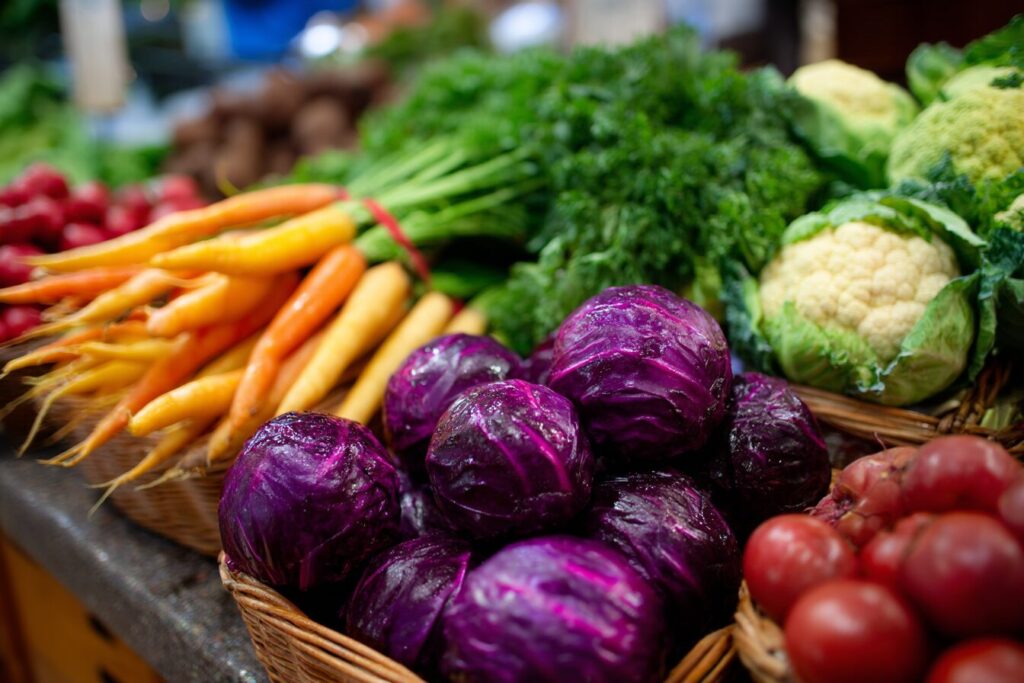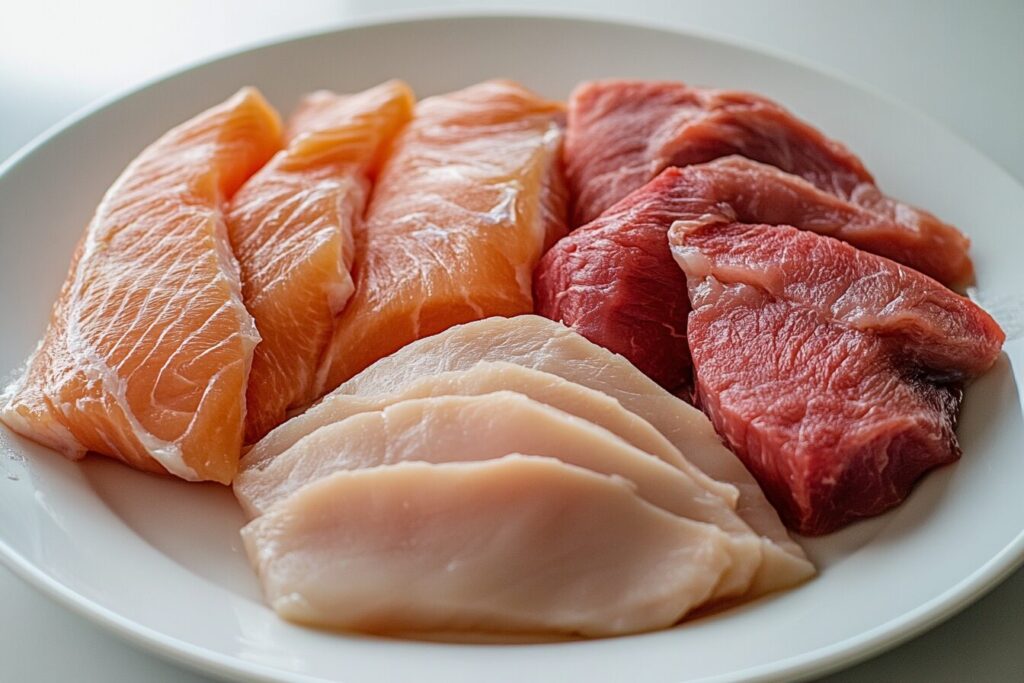Buying seasonal produce isn’t just good for your wallet—it’s better for flavor, nutrition, and even the planet. When you shop what’s in season, you get fruits and veggies at their peak ripeness, lowest price, and highest quality. Plus, it’s a great way to add variety to your meals and support local farmers.
Save Money, Eat Fresher, and Shop Smarter All Year Long
This month-by-month seasonal produce guide will help you know exactly what to buy, when to buy it, and how to make the most of it. Let’s dive into a full year of fresh, budget-friendly eating.
When you shop for seasonal produce, you’re already saving money by buying fruits and vegetables at their freshest and most affordable—but you can stretch those savings even further with cash-back apps like Rakuten and BeFrugal. Whether you’re ordering online from stores like Walmart or Instacart, or browsing seasonal deals at Target, these platforms give you a percentage back on your purchases. Plus, you’ll get a $30 bonus from Rakuten and a $10 bonus from BeFrugal just for signing up. It’s an easy, effortless way to stack your seasonal savings. Sign up today and start earning while you shop smart!
🌱 January: Winter Staples & Citrus Brilliance
Winter may feel like slim pickings, but January offers crisp produce that stores well and bright citrus to cut through the cold.
What to Buy:
- Citrus: Oranges, grapefruits, lemons, limes, tangerines
- Root vegetables: Carrots, parsnips, beets, rutabagas
- Cruciferous: Cabbage, Brussels sprouts, cauliflower
- Storage crops: Potatoes, winter squash, onions, garlic
- Greens: Kale, collard greens, Swiss chard
Tips:
Roast root veggies for sweetness, or juice citrus for immunity-boosting shots.
🍊 February: Peak Citrus & Cozy Cookables
Still in winter mode, February continues to shine with citrus and hearty, nutrient-packed produce.
What to Buy:
- Citrus: Blood oranges, Meyer lemons, pomelos
- Cruciferous: Broccoli, cabbage, kohlrabi
- Leafy greens: Spinach, kale, escarole
- Mushrooms, turnips, leeks, sweet potatoes
Tips:
Make warming soups with cabbage and sweet potatoes. Add zest from citrus to brighten dressings or baked goods.
🌷 March: Early Spring and Transitional Greens
As the season begins to shift, March brings the first signs of spring with tender greens and new textures.
What to Buy:
- Asparagus (early)
- Artichokes (late in the month)
- Spring onions
- Radishes
- Spinach, arugula, lettuce mixes
- Peas (snow, snap, and shelling)
Tips:
Sauté asparagus with garlic and lemon, or add radishes to spring salads for crunch and spice.
🌼 April: Spring Greens & Garden Fresh Starts
April really kicks off the spring season. Look for tender veggies and more vibrant variety.
What to Buy:
- Asparagus
- Rhubarb
- Green garlic
- Peas, fava beans
- Lettuce, arugula, spinach, Swiss chard
- Carrots, beets, radishes
Tips:
Make a spring stir-fry with peas, greens, and green garlic. Try roasted rhubarb over yogurt or oats.
🌞 May: The Fresh Explosion Begins
May is when local farmers’ markets begin booming with vibrant produce, especially greens and berries.
What to Buy:
- Strawberries
- Asparagus
- Peas
- Lettuce, kale, bok choy, mustard greens
- Radishes, green onions, turnips
- New potatoes
Tips:
Enjoy strawberries raw or in smoothies. Use new potatoes in creamy spring potato salads or frittatas.
🍓 June: Berries, Beans, and Early Summer Color
The start of summer brings juicy fruit and even more variety to your kitchen.
What to Buy:
- Berries: Strawberries, blueberries, raspberries, blackberries
- Zucchini and summer squash
- Cucumbers
- Tomatoes (early varieties)
- Green beans, snap peas
- Herbs: Basil, dill, mint
Tips:
Make a berry-packed breakfast bowl or a cucumber-mint salad for hot days.
👉 Want to grow your own veggies? Read: How to Grow Microgreens in Your Kitchen
☀️ July: Peak Summer Abundance
July is summer in full swing, with juicy fruit, ripe tomatoes, and grilling-friendly vegetables.
What to Buy:
- Corn
- Tomatoes
- Zucchini, yellow squash
- Bell peppers, jalapeños
- Eggplant
- Melons: Cantaloupe, watermelon
- Cherries, peaches, nectarines, plums
Tips:
Grill zucchini and corn for easy sides. Freeze excess berries or peaches for smoothies.
🍑 August: Hot Weather Favorites & Late Summer Bounty
August is overflowing with the best summer has to offer. It’s also a great time to stock up and preserve.
What to Buy:
- Tomatoes (peak)
- Peppers, eggplant
- Corn, green beans
- Stone fruit: Peaches, nectarines, plums
- Melons, grapes
- Summer squash
Tips:
Make large batches of tomato sauce or roasted veggies for freezing. Try peach salsa or grilled stone fruit.
🍁 September: Late Summer Meets Early Fall
As summer fades, September gives you both warm-weather produce and the first fall favorites.
What to Buy:
- Apples (early varieties)
- Pears
- Grapes
- Tomatoes, eggplant, bell peppers
- Corn
- Zucchini
- Pumpkins (early), winter squash
Tips:
Transition to heartier meals with roasted squash and apple crisps.
🎃 October: Fall Harvest in Full Force
October brings classic autumn flavors, great for roasting, soups, and baking.
What to Buy:
- Apples, pears
- Pumpkins
- Butternut, acorn, kabocha squash
- Cabbage, cauliflower
- Sweet potatoes, carrots
- Broccoli, leeks
Tips:
Make roasted veggie trays and bake spiced apple muffins. Freeze squash for winter use.
🍂 November: Cold Weather Cooking Essentials
November is about warm, savory meals. Stock up for stews, stuffing, and cozy recipes.
What to Buy:
- Sweet potatoes, potatoes
- Carrots, turnips, parsnips
- Cabbage, Brussels sprouts
- Cranberries
- Apples, pears
- Onions, garlic
Tips:
Start meal prepping soups and casseroles. Cranberries freeze well and add tang to dishes or baked goods.
❄️ December: Storage Crops and Winter Comfort
The final month of the year brings hearty storage veggies, bright citrus, and cozy meals.
What to Buy:
- Citrus: Oranges, mandarins, lemons
- Pomegranates
- Potatoes, sweet potatoes
- Beets, parsnips, rutabagas
- Kale, cabbage
- Leeks, garlic, onions
Tips:
Roast root veggies with olive oil and rosemary. Use citrus zest in baking or to brighten roasted dishes.
🧺 Tips for Seasonal Produce Shopping on a Budget
- Shop Farmers’ Markets Late in the Day – Vendors often discount produce to sell out before packing up.
- Look for “Ugly” Produce – It’s cheaper and still perfectly good.
- Freeze What You Can’t Use – Berries, chopped peppers, onions, and even leafy greens freeze well.
- Plan Around Sales – Use what’s in season and on sale to build your weekly meal plan.
- Grow It Yourself – Even a small patio or windowsill garden can yield fresh herbs, lettuce, or tomatoes.
👉 Learn how to grow potatoes indoors with our complete guide: How to Grow Potatoes Indoors: A Beginner’s Guide to Fresh Spuds Year-Round
🥗 Why Seasonal Eating Is Smart and Sustainable
Eating with the seasons means:
- Better Flavor – Produce is picked at peak ripeness.
- Lower Prices – Less storage and transport means lower costs.
- More Nutrition – Fresher food means more vitamins and antioxidants.
- Smaller Footprint – Supporting local farms reduces environmental impact.
Plus: Seasonal eating adds natural variety to your meals and helps you avoid the burnout of eating the same few foods all year.
Before you head out to snag those in-season deals, don’t forget to activate cash-back offers through Rakuten and BeFrugal. Pairing seasonal produce with these free savings tools means you’re not only getting the best prices at peak freshness—you’re also putting cash back in your pocket. With a $30 sign-up bonus from Rakuten and a $10 bonus from BeFrugal, there’s no reason not to give them a try. Sign up today and make every grocery trip work harder for your budget.
🌍 A Year of Smart Shopping Starts Now
Now that you know what produce is in season every month, you’re ready to shop smarter, eat better, and save money—all year long. Whether you’re planning your weekly meals, shopping on a tight budget, or just want food that tastes incredible, seasonal produce is your secret weapon.



